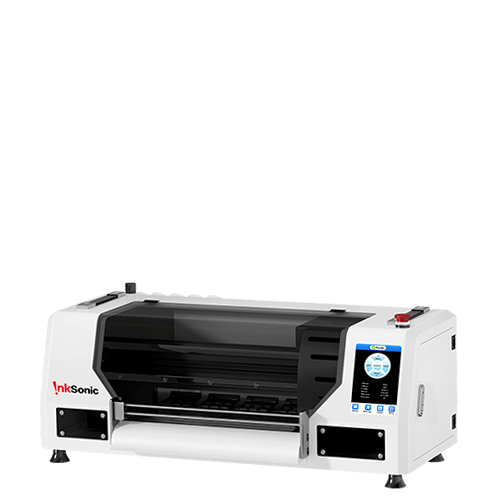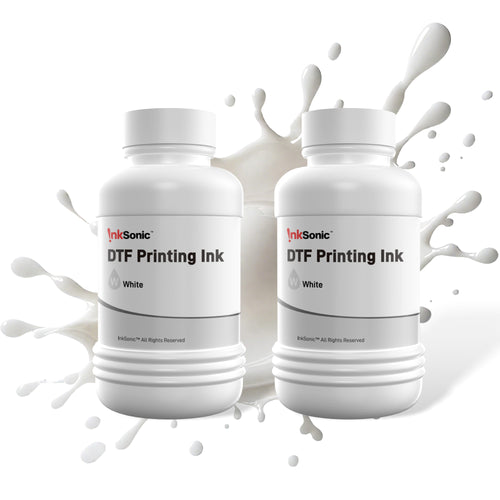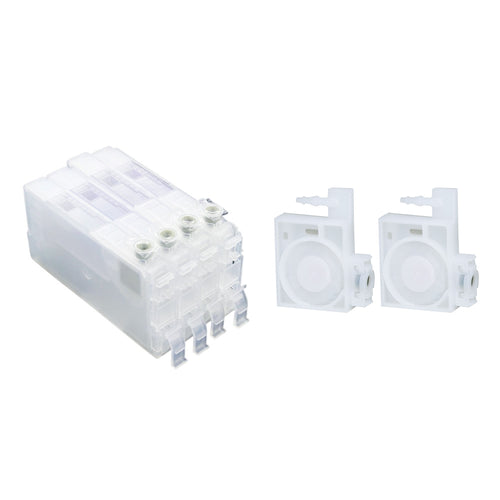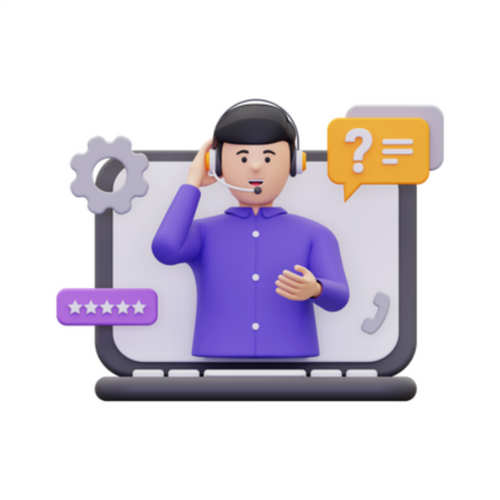Introduction
The custom T-shirt market is expected to reach $3 billion by 2025. Even capturing a small share of this market can bring significant profits to your T-shirt business. That makes 2025 the perfect time to start a T-shirt business. Next, InkBear will guide you step by step to build your T-shirt business.

Step 1: Choose Your Niche Market and Target Customers
A niche market is a specialized segment of consumers with specific needs and preferences, making them more likely to purchase certain products or services. These consumers form distinct groups within the broader market and are often willing to pay more for products tailored to their unique requirements.
For instance, the women’s shoe market includes niches like eco-friendly footwear, orthopedic shoes, or hiking boots. Each caters to a specific audience with unique demands.
1.1 Identify Your Niche
Choose a promising market (e.g., graphic T-shirts, slogan T-shirts, eco-friendly apparel). Conduct market research to find popular designs and target audiences.
Use Google to search for keywords like:
"Choose a niche for T-shirt business"
"How to find a profitable T-shirt niche"
1.2 Define Your Target Audience
Once you've identified a potential niche, it's important to further segment your target market and understand its characteristics. Avoid using broad categories such as "male consumers" or "female consumers," especially in the early stages. Instead, focus on more specific groups, like LGBTQ+ individuals, outdoor enthusiasts, TikTok fans, or eco-conscious consumers.
To better understand their needs, use keyword research tools like Semrush, Ahrefs, and Google Trends to uncover the phrases your target audience is actively searching for. This will provide valuable insights into their interests and preferences, helping you refine your marketing and product strategy.
Key considerations for audience segmentation:
Price: Luxury, mid-range, or budget-friendly
Demographics: Gender, age, income, education
Product Quality: Premium, handmade, or affordable
Psychographics: Values, interests, attitudes
- Geographics: Country, city, community
1.2.1 Audience Examples
TikTok Enthusiasts
Age: 16–30
Gender: All
Interests: Passionate about social media (especially TikTok), staying on top of trends, engaging with internet culture, and expressing themselves.
Price Range: $15–$30
- Pricing Strategy: Mid-range pricing to attract younger consumers, with adjustments based on design complexity and brand appeal.
- Idea: Create T-shirts featuring trending TikTok memes. Highlight your printing capabilities: high-quality designs with user-friendly software that lets creators easily customize their designs.
- Age: 18–40
Gender: All
Interests: Passionate about travel and adventure, love outdoor activities, prioritize comfort and functionality, and enjoy apparel that reflects their personality and travel experiences.
Price Range: $20–$40
- Pricing Strategy: Target mid to high-end markets, emphasizing comfort and durability. Adjust prices based on materials and printing techniques.

- Idea: Offer motivational or adventure-themed T-shirts with durable, high-quality fabrics suitable for outdoor wear.
- Age: 25–45
Gender: All
Interests: Focused on sustainability, love nature, prefer eco-friendly products, and care about a brand’s social responsibility.
Price Range: $30–$60
Pricing Strategy: Premium pricing reflects eco-friendly materials and sustainable production processes, as consumers are willing to pay extra for environmentally friendly products.

-
PS:
If you consider the market, you could promote T-shirts using eco-friendly InkSonic DTF inks. Share production videos on social media to highlight your sustainability commitment.
Create TikTok videos or Twitter posts to convey your brand’s eco values. Additionally, InkSonic’s Creator Incentive Campaign supports early-stage creators with opportunities to win cash or product prizes.
Step 2: Sourcing Materials
Search for keywords like:
"Best T-shirts for printing"
"Where to buy blank T-shirts for business"
For Instance:
Outdoor enthusiasts: durable, comfortable fabrics.
TikTok fans: trendy, stylish materials.
Eco-conscious consumers: eco-friendly packaging and sustainable production methods.
PS T-shirt Recommendation: Inksonic's 100% cotton T-shirts are soft, breathable, and offer excellent ink adhesion and durability, making them perfect for vibrant, long-lasting DTF printing. Made with sustainable and ethical production practices, they ensure vivid colors with minimal fading and outstanding quality.
InkBear: The advertising time is over, back to the topic. You have many printing options, but I recommend DTF printing technology the most. Next, I will introduce you to common printing technologies and tell you why DTF printing technology is most suitable for beginners.
Step 3: Choose a Printing Method
3.1 Common T-Shirt Printing Methods
1. Screen Printing
Features: Uses a stencil to apply ink onto T-shirts, ideal for bulk production.
Pros: Vibrant colors, durable, great for simple designs and large areas.
- Cons Complex setup, better suited for large orders, higher upfront costs.

2. Direct-to-Garment (DTG)
Features: Prints designs directly onto T-shirts using specialized inkjet printers. Ideal for small batches or one-offs.
Pros: Prints complex, multi-color designs with flexibility for customization.
- Cons: Higher cost per item, less durable colors over time.

3. Direct-to-Film (DTF)
Features: Prints designs onto a special film, then transfers them to T-shirts using heat.
Pros: Works on various materials, delivers detailed designs, and offers excellent durability.
- Cons: Higher upfront costs for equipment.

DTF printers offer high-quality prints with low investment, ideal for beginners. Easy to use and maintenance-friendly, they support customization and small batches while reducing costs. Perfect for startups and studios alike. Discover InkSonic’s solutions next!
3.2 InkSonic DTF Printer:
Before 2020, as industrial printing equipment suppliers, we provided large-format printers to thousands of customers. However, there was a gap in the market for compact desktop printers catering to specific needs. To address the most pressing demand—"DTF printer for T-shirt business"—we invested 18 months in research and development.

InkSonic launched InkLite 1.0, a lightweight DTF printer designed for home and workshop users. This was followed by InkLite 2.0, with enhanced features for colder climates. In early 2024, we released InkPro 3.0, offering faster printing speeds and reduced maintenance requirements. Throughout this journey, InkSonic has been committed to providing the best T-shirt printing equipment for beginners, supporting them with comprehensive, beyond-expectation customer service. Know more ~
3.3 Essentials for DTF Printing
Here’s a list of the essential equipment needed to get started with DTF printing for T-shirt customization:
DTF Printer
A DTF (direct-to-film) printer is the first step to creating high-quality prints. These printers allow you to produce vibrant, detailed designs on a variety of fabrics, making them ideal for eco-conscious users handling small-batch, custom orders.

For more details, please focus on the DTF printer buying guide for beginner
Heat Press Machine
A heat press machine transfers your designs onto T-shirts. It uses heat and pressure to ensure the prints are durable, wear-resistant, and firmly attached. Choose a machine that suits your production scale and ensures ease of use. Tutorial video

Design Software
User-friendly design software is crucial for bringing your creative ideas to life and meeting customer needs. At InkSonic, we provide an advanced RIP system to guide you through the design process, along with 24/7 dedicated support.

Transfer Film
High-quality, cost-effective transfer film is essential for successful printing. Be sure to select a film compatible with your DTF printer for the best results.

Cutting Tools (Optional)
If your designs involve intricate details, a cutting machine can help accurately trim the transfer film, improving efficiency. However, you can also use scissors or other tools—just remember to prioritize safety.
After you have an option for printing equipment, the next question you need to consider is how to find your creative inspiration.
Step 4. Design Your T-Shirts
4.1 Creating Unique Designs
Struggling with T-shirt design ideas? Start by checking out current best-sellers. Explore these popular graphic T-shirt marketplaces for inspiration:
Another great research tip is to use Google Trends to see what topics are currently popular. Trending themes can serve as inspiration for your T-shirt designs.
4.2 Outsourcing Design Work
4.2.1 Hiring Freelance Designers For a T-shirt Business
If you want to outsource T-shirt designs, platforms like Fiverr and Upwork etc are excellent resources for finding freelance talent. Here are some other places to look for professional T-shirt designers:

- Dribble: A vibrant design community where you can find designers whose style matches your needs. Message them directly to discuss your project.

- Upwork: A general freelancing platform with a wide range of artists. Review past projects and portfolios to find the right fit for your T-shirt business.

- Fiverr: Known for its flexibility, Fiverr connects you with freelancers offering diverse services, including graphic design, at competitive prices.
4.3 T-Shirt Design Marketplaces
You can also buy pre-made designs to start your T-shirt business without hiring a designer. While cost-effective, note that others may sell the same designs, making it harder to stand out. Check out these platforms:
Tshirt Factory: Offers a variety of vector designs, from vintage to punk styles.
Creative Market: Features over 3 million graphics and templates.
GraphicRiver: Provides royalty-free Photoshop vectors and icon packs.
Pro Tip: Ensure your design files meet these specifications for high-quality printing:
Minimum 300 DPI (dots per inch) or PPI (pixels per inch)
Transparent background
Large enough to cover the actual print area on a T-shirt
4.4 Designing Samples and Mockups
Mockups and samples allow you to preview designs and avoid production errors. Here’s how to create them:

Use design software like Adobe Photoshop for realistic mockups. Templates often include layered files where you can change T-shirt colors and seamlessly apply your designs.
-
Prefer online tools? Try these:
If digital mockups aren’t for you, consider ordering T-shirt samples and taking product photos yourself.
After you have your design work, the next step is to show your work to more people and earn back the time and money you spent. Next, build your online store.
Step 5: Build Your Online Store
5.1 Choose an E-commerce Platform
Selecting the right e-commerce platform is critical when starting a T-shirt business. Here’s a quick rundown of popular platforms, their pros and cons, and why Shopify is the best choice:
1. Shopify
Shopify is widely regarded as the best platform for a T-shirt business because:
Ease of Use: It is user-friendly, easy to set up, and manage, offers a wide range of themes and app integrations, offers robust payment processing, and offers excellent customer support.
Integration: Offers a variety of apps and plugins to expand functionality.
- Optimization: Designed for e-commerce, with strong SEO and marketing tools to attract customers.
- PS: The only thing that might make you hesitate, Inkbear thinks, is the monthly subscription fee and transaction fee.
2. Etsy
Pros: It focuses on handmade and unique items, making it ideal for small sellers, and it has strong community support.
Cons: High competition; complex fee structure, including listing and transaction fees.
3. WooCommerce
Pros: Highly flexible and great for tech-savvy users; full control over your store.
Cons: It requires more technical knowledge and self-management of maintenance and security.
4. BigCommerce
Pros: Powerful features for larger businesses; no transaction fees.
Cons: Steeper learning curve; limited customization options.
5.2 Branding
Building a strong brand is essential in the T-shirt business. Here are the key steps to establish your brand through logos, colors, and messaging:
Logo Design
Create a unique, recognizable logo that reflects your brand’s personality and values. Ensure it’s clear in different sizes and on various backgrounds.
Color Scheme
Use colors that align with your brand identity. Consistency across platforms enhances brand recognition.

Marketing Message
Define your core values and target audience, then craft a clear marketing message that tells your brand story. Ensure consistency across all marketing channels (social media, website, ads, etc.).
A strong brand will help you stand out in a competitive market, attract your ideal customers, and build loyalty.
You may find that when you put your work on your store, no one visits your store. This is normal, so in the next step, InkBear will teach you how to attract customers.
Step 6: Market Your T-Shirt Business
In a competitive market, effective marketing is key to success. Here are some proven strategies:
6.1 Social Media Marketing
Social media is a powerful tool for showcasing your T-shirt designs and attracting potential customers.
-
Instagram :
Build an aesthetic Instagram profile and regularly post high-quality photos of your T-shirt designs, highlighting product details and styling tips.
Use Instagram Stories and Reels to share behind-the-scenes content, customer feedback, and outfit inspiration to drive engagement.
Leverage relevant hashtags (e.g., #TshirtDesign, #Fashion) to increase visibility and participate in trending topics.
-
TikTok :
Create short videos that highlight your T-shirt's creative and unique styles. Use trending music and challenges to attract viewers.
Share clips of customers wearing your T-shirts and encourage user-generated content (UGC) to boost trust.
-
Facebook :
Set up a brand page and post updates about new products, promotions, and customer reviews.
Join relevant groups and communities, share your expertise, and subtly promote your brand.
-
Reddit :
Engage with communities related to fashion, design, or specific niches by sharing your products and design ideas.
Follow community guidelines and focus on building trust rather than excessive promotion.
6.2 Search Engine Optimization (SEO)
Optimizing your website and product pages for search engines can drive organic traffic.
Keyword Research: Use tools like Google Keyword Planner or Ahrefs to identify high-traffic keywords related to T-shirts. Incorporate these into product descriptions, page titles, and blog content.
Product Page Optimization: Include detailed descriptions, high-quality images, and relevant tags. Use clear titles and descriptions to help search engines understand your content.
Content Marketing: Write blogs about T-shirt trends, styling tips, or industry insights to attract potential customers and build website authority.
Backlink Building: Partner with other websites or contribute guest posts to gain backlinks and improve search rankings.
6.3 Paid Advertising
Paid ads can effectively increase your brand’s visibility.
Google Ads: Run search ads targeting customers actively searching for T-shirts. Use relevant keywords to ensure your ads appear in the right search results.
Facebook Ads: Use Facebook’s targeting features to reach specific demographics (age, gender, interests). Include eye-catching images and concise copy to encourage clicks.
Instagram Ads: Highlight your designs with visually appealing ads. Use carousel ads to showcase multiple products or story ads for short-term promotions.
Congratulations, you have received so many orders that you can’t even count them. Some customers even ask you why you haven’t shipped the goods yet. Next, inkbear will teach you how to manage your business properly.
Step 7: Manage Your T-Shirt Business
7.1 Expand Your Product Line
Offering additional products can attract more
customers and increase sales.
New Product Types: Add items like hats, bags, or accessories that complement your T-shirt designs.
Seasonal Products: Launch limited-edition items for holidays or seasons, such as summer tees or winter hoodies.
Customization Options: Allow customers to personalize their orders, appealing to those seeking unique styles.
7.2 Automate Business Processes
Automation can boost efficiency and free up time for growth.
Marketing Automation: Use tools like Mailchimp to send automated emails or Buffer for scheduled social media posts.
Inventory Automation: Automate stock tracking and replenishment with tools like TradeGecko.
Order Fulfillment: Streamline order processing with e-commerce platform integrations or fulfillment services.

Congratulations! Now you can boldly start your business. Finally, Inkbear will say a few more words and take you to review today's guide.
Conclusion
Launching a successful T-shirt business requires careful planning and execution. Here’s a recap of key steps:
- Market Research: Identify your niche and understand your target audience.
- Product Design: Create innovative, market-relevant designs.
- E-commerce Platform: Choose a platform like Shopify for seamless store management.
- Brand Building: Develop a cohesive brand image and story.
- Marketing: Use social media, SEO, and paid ads to grow your audience.
- Order Fulfillment: Ensure efficient processes for delivery and customer service.
- Product Expansion: Offer more products and customization to increase revenue.
- Automation: Optimize workflows for greater efficiency.
Focus on your niche, stay creative with designs, and invest in effective marketing to make your T-shirt business thrive! Whenever you're ready, InkSonic offers beginner-friendly DTF printers and comprehensive tutorials to help boost your T-shirt business. Buy our hottest pick here and use code INK50 to get $50 off for your first order!


































